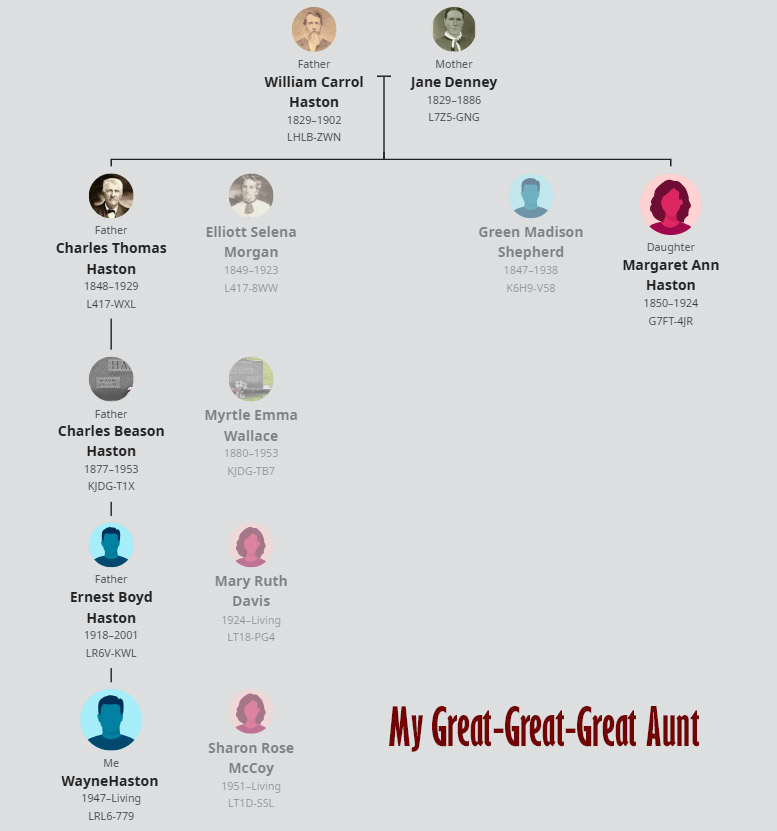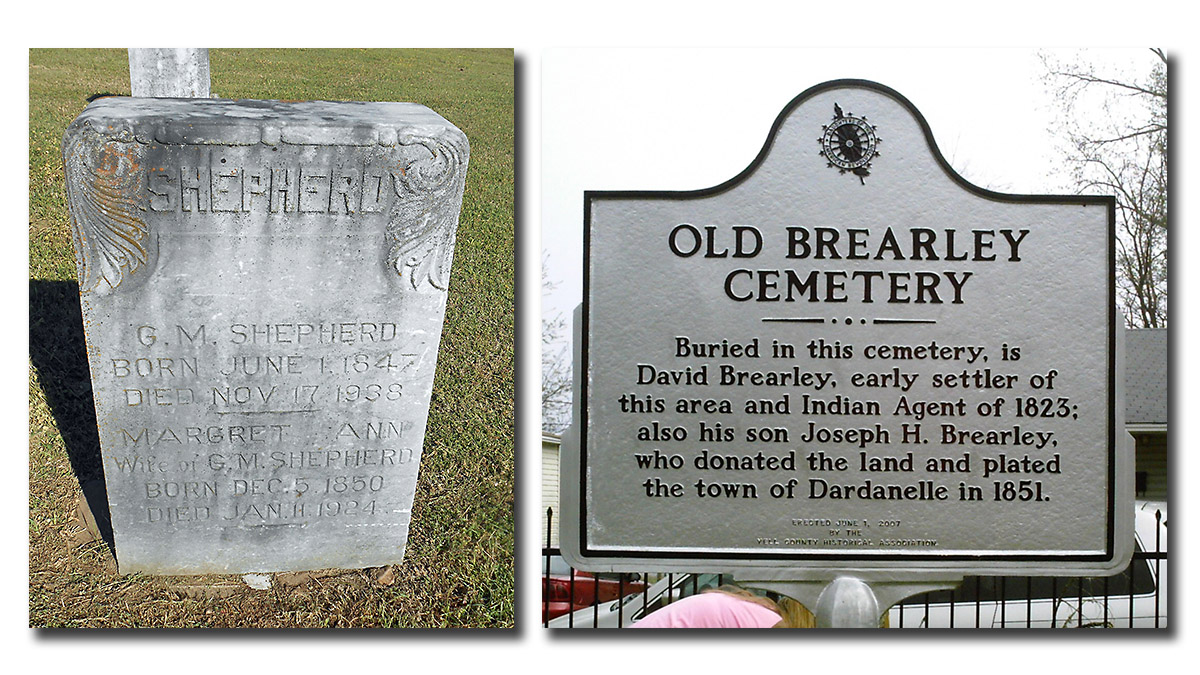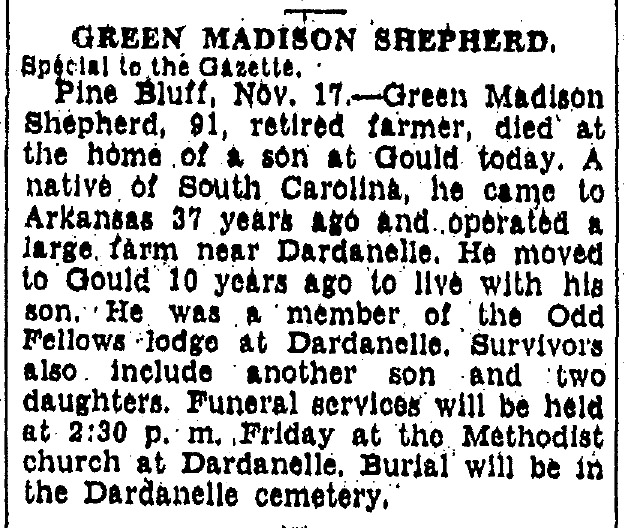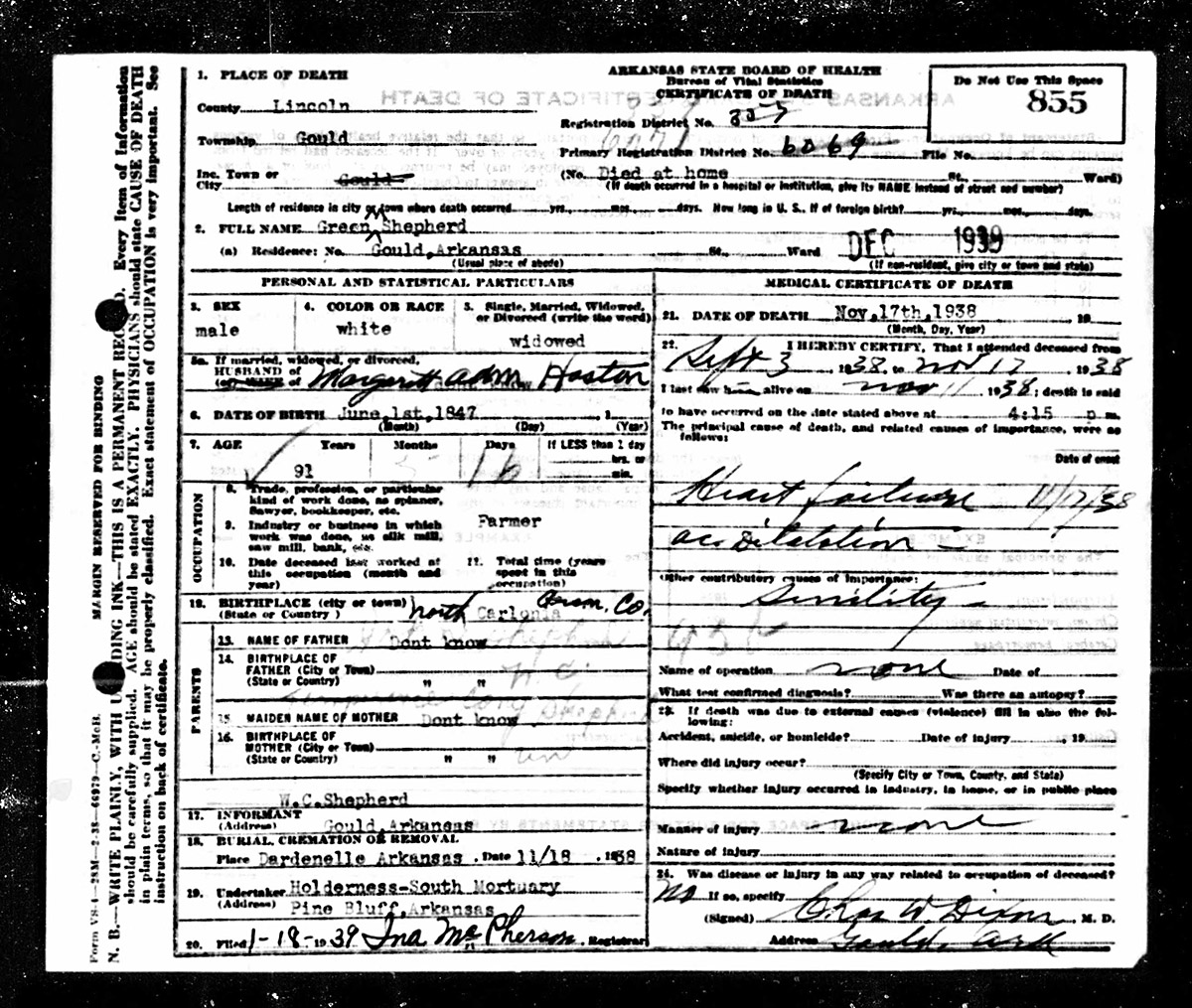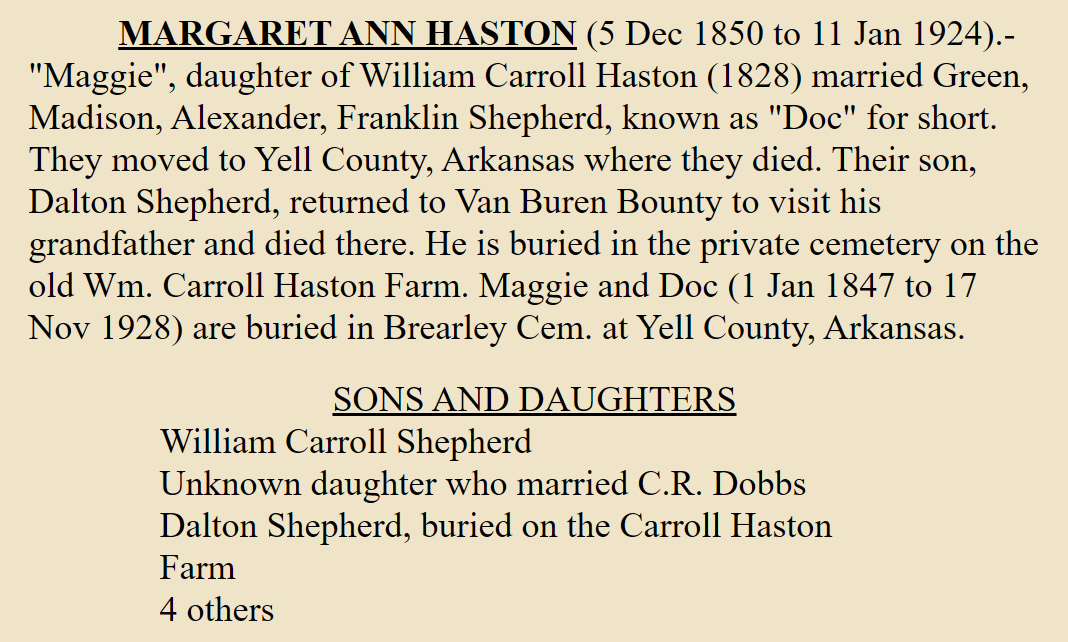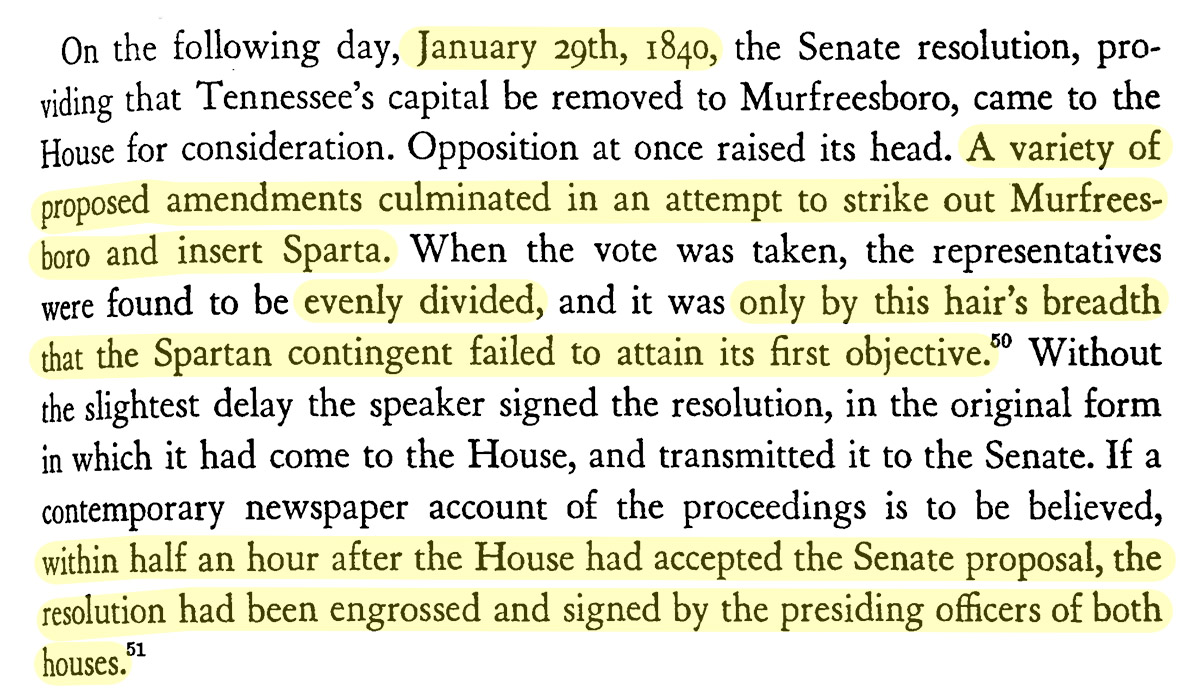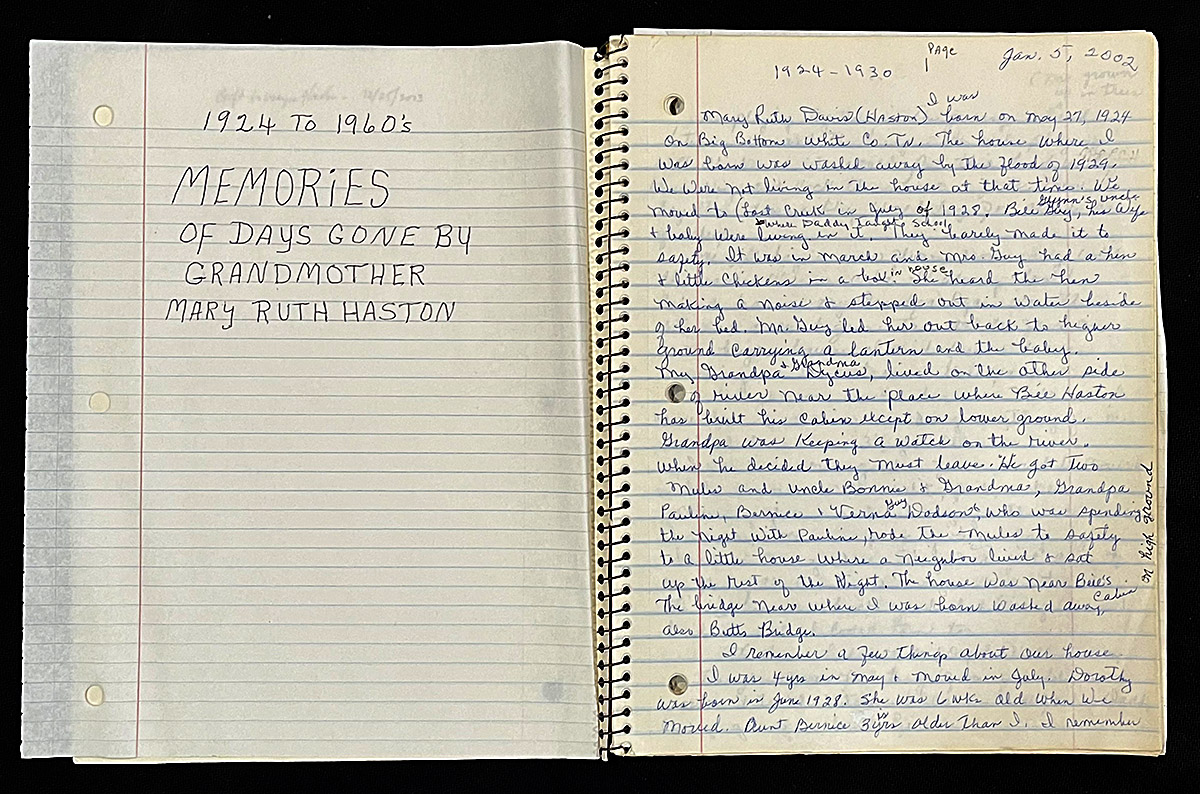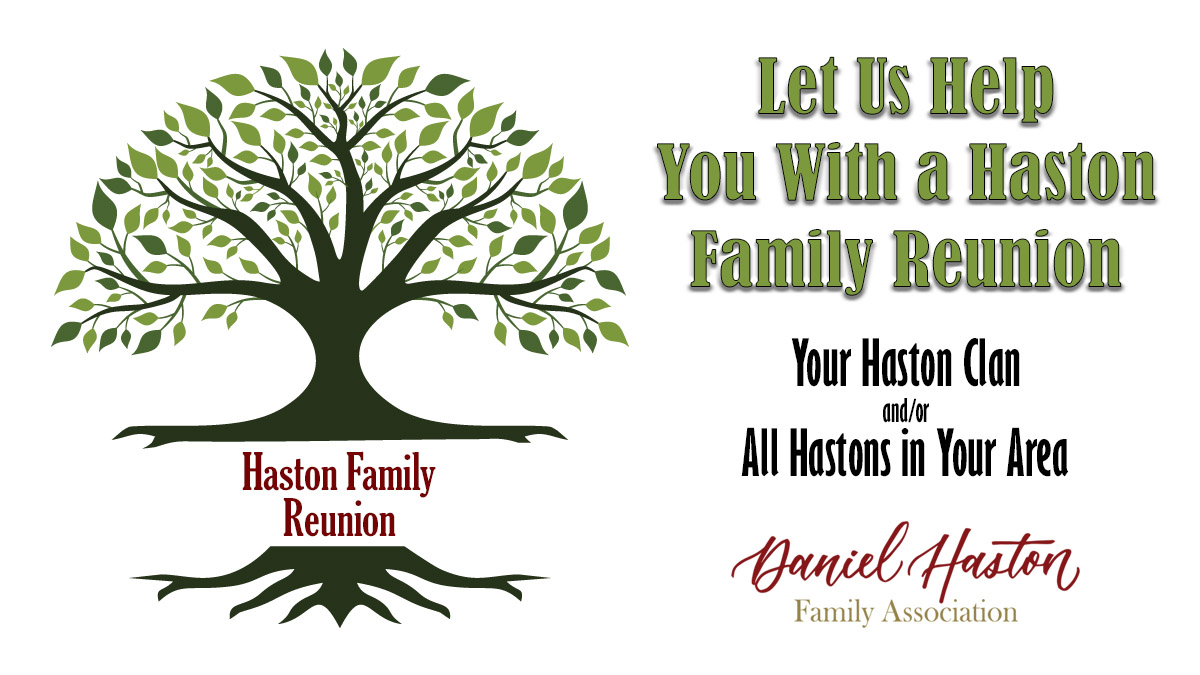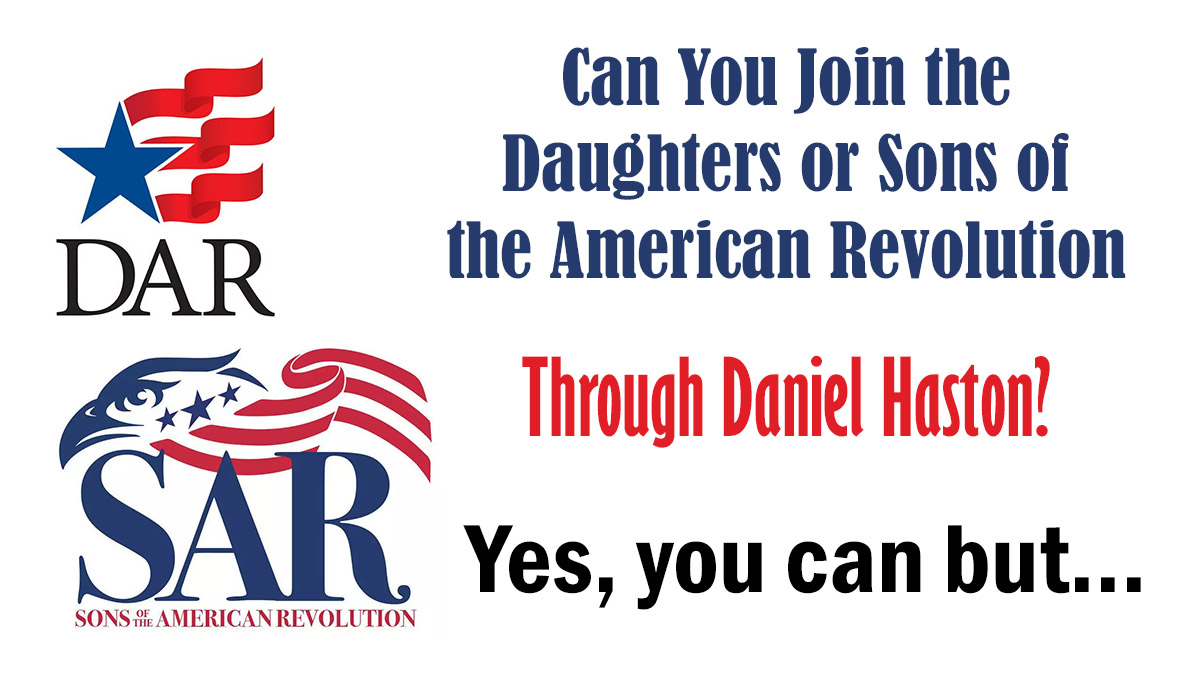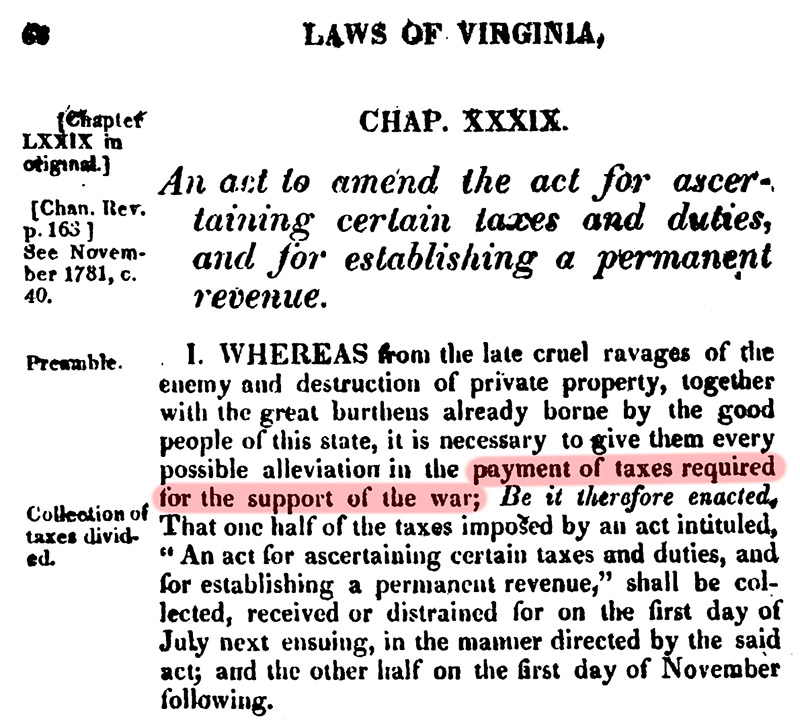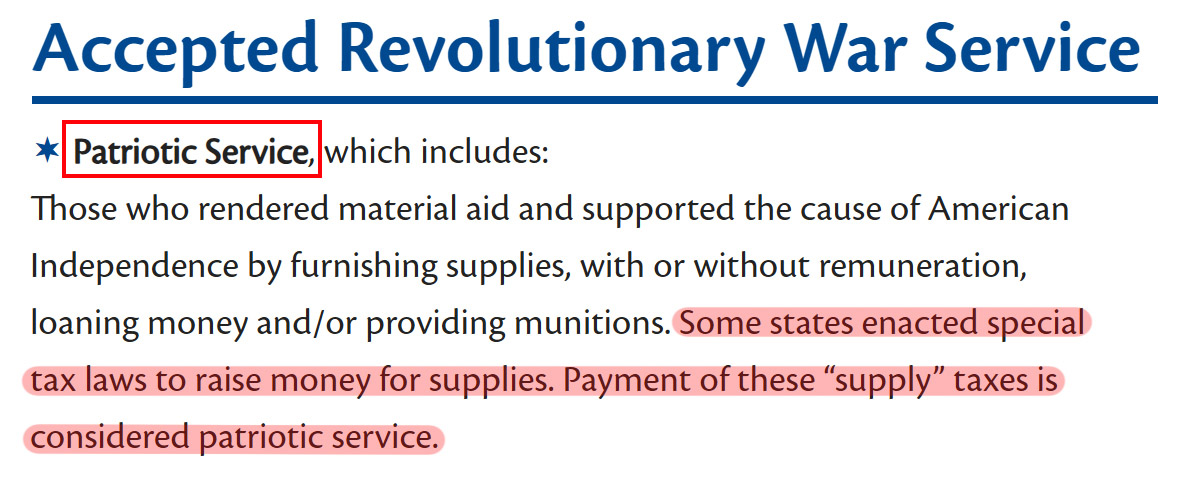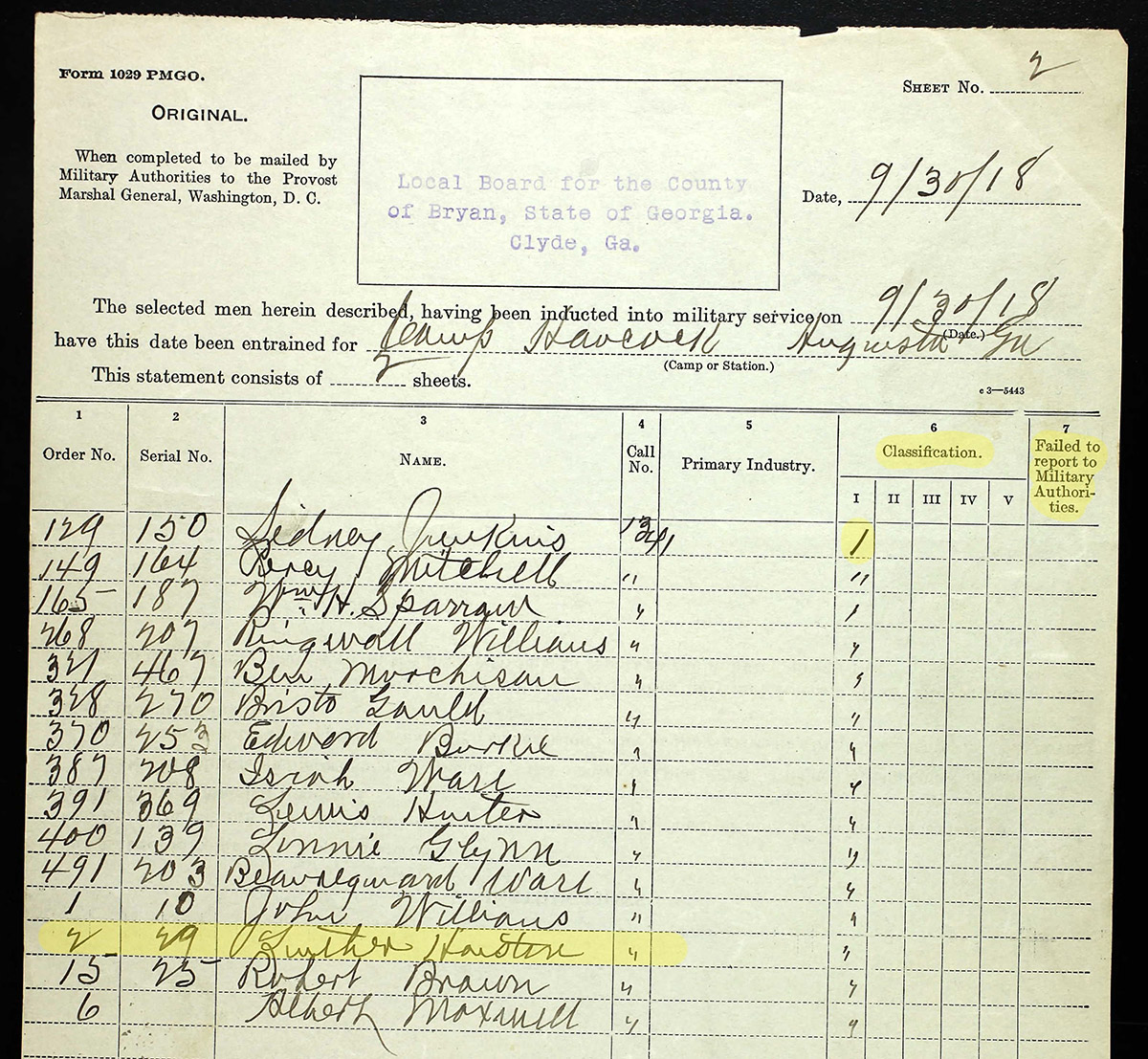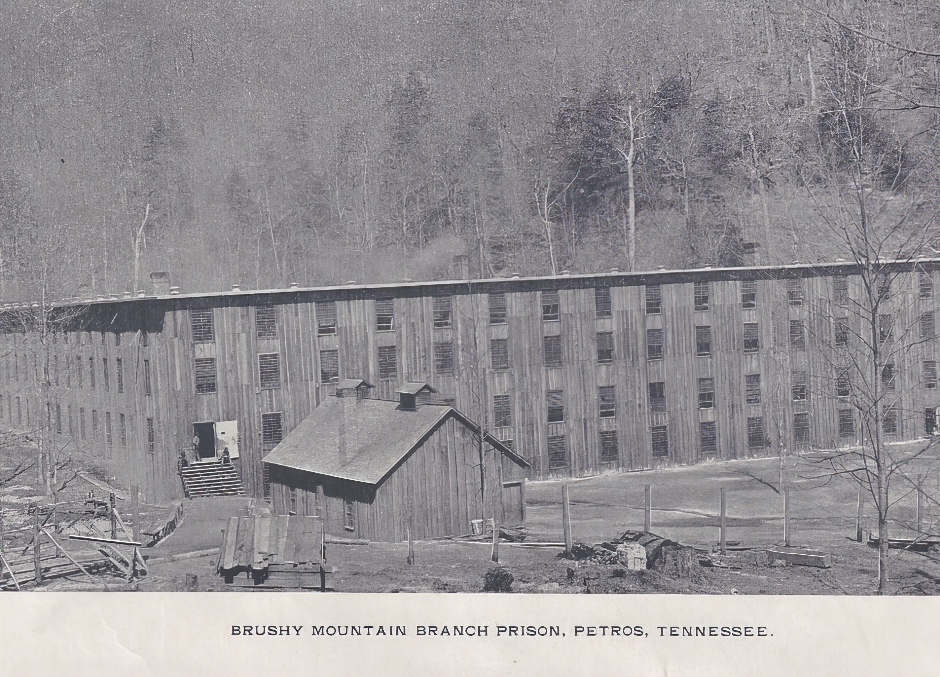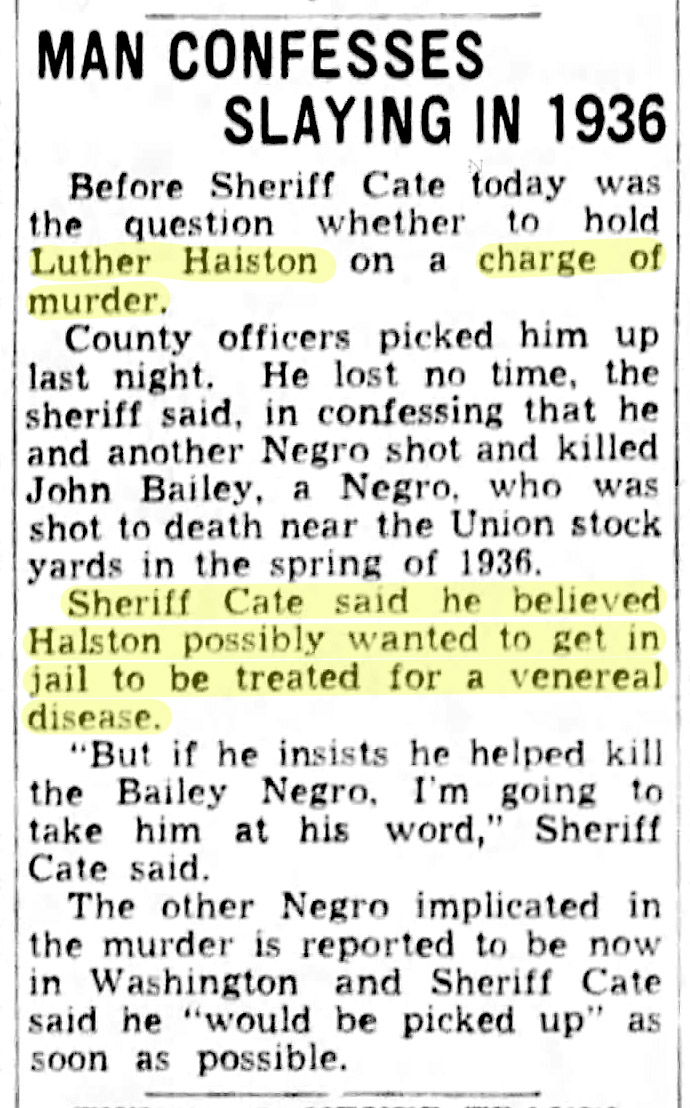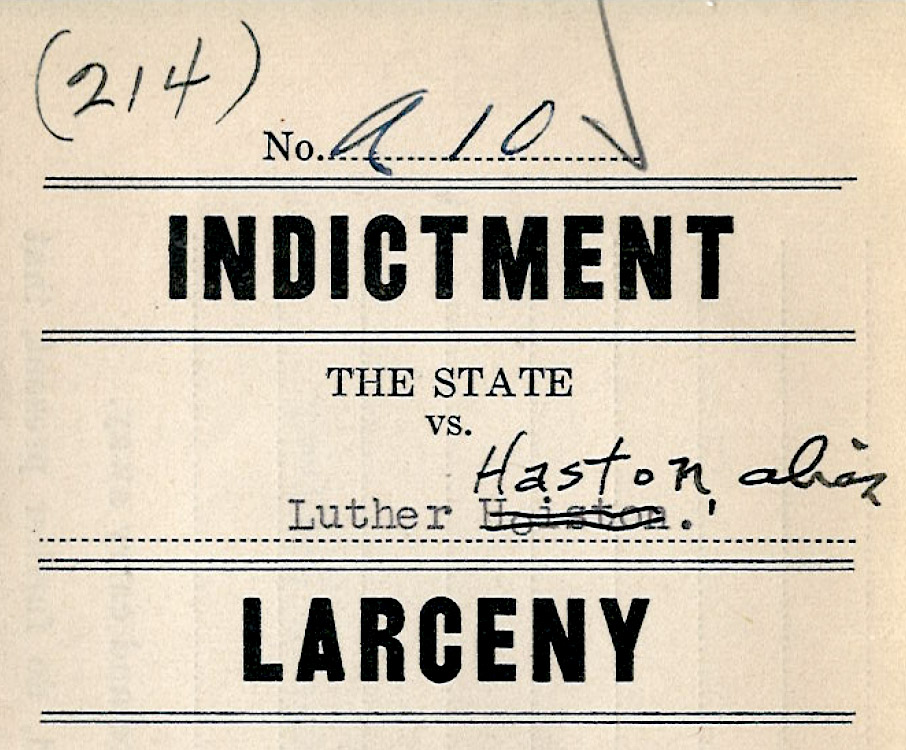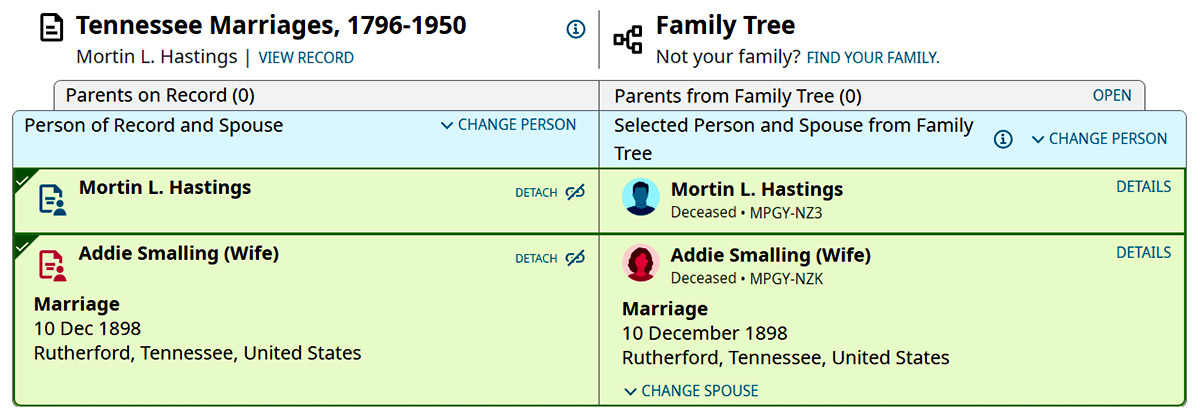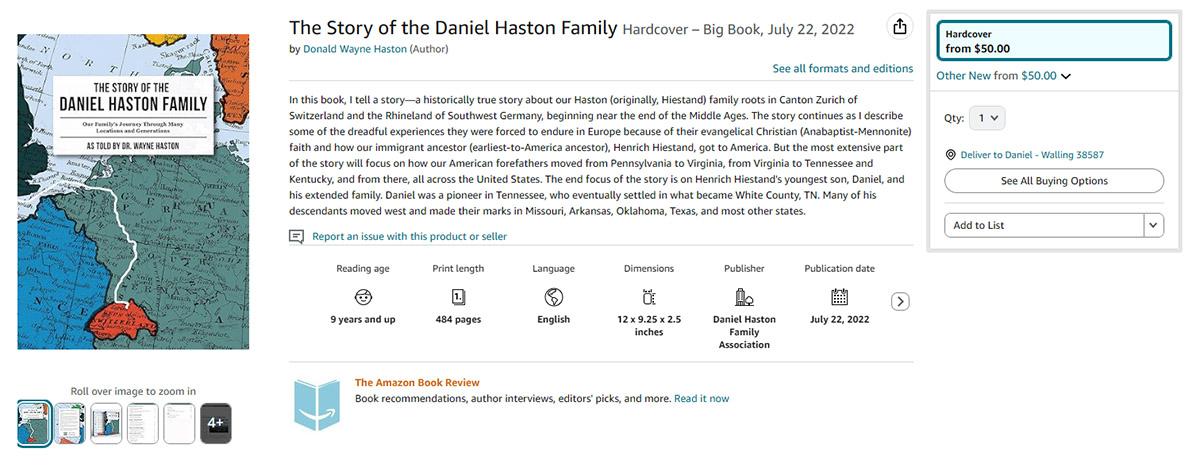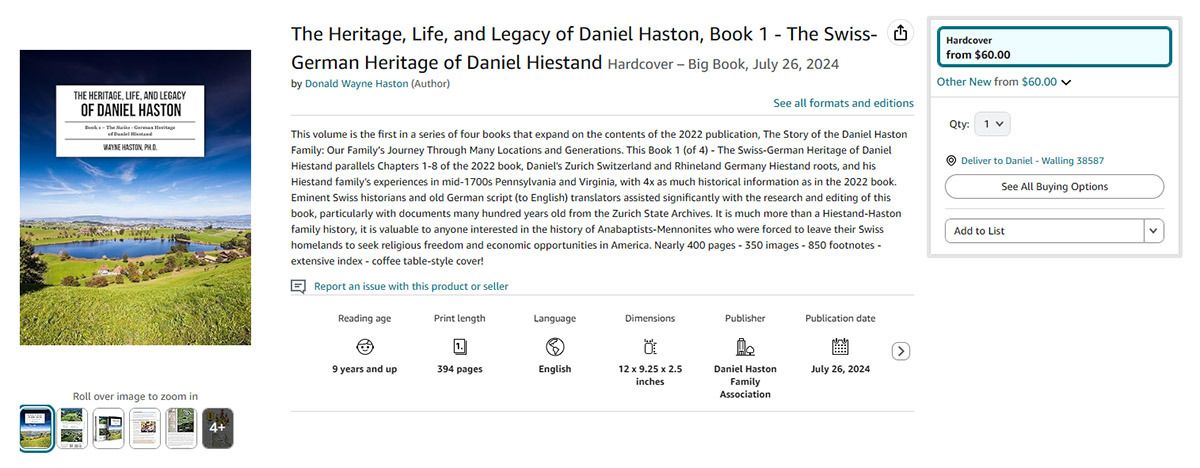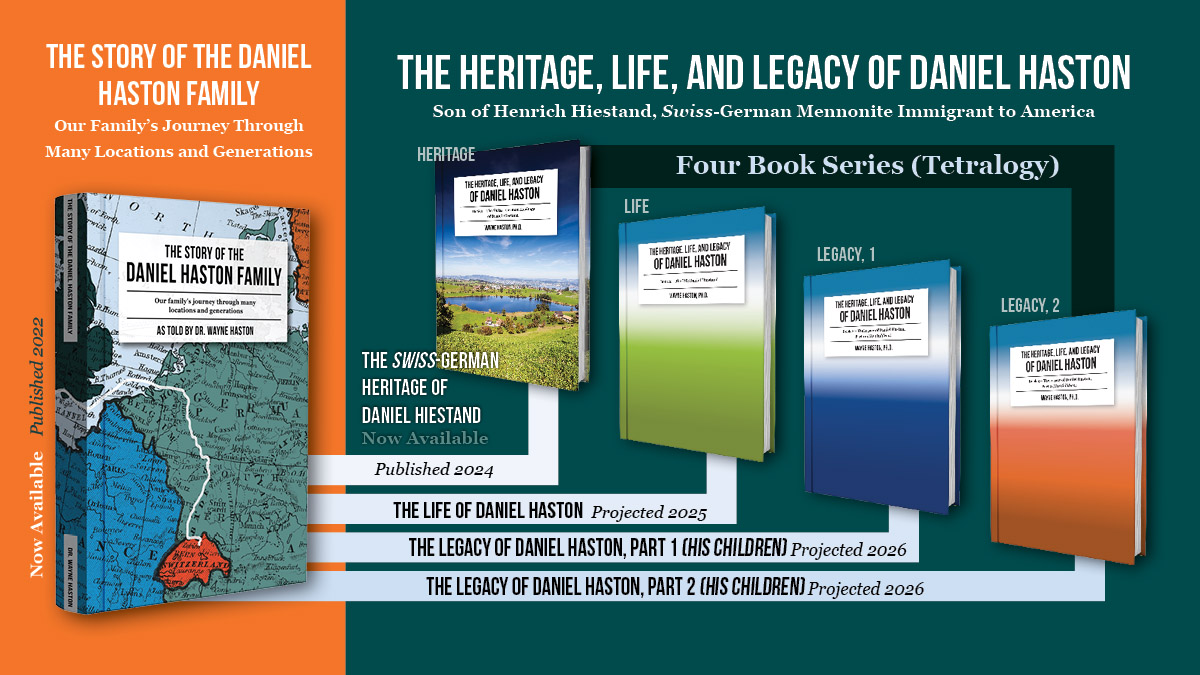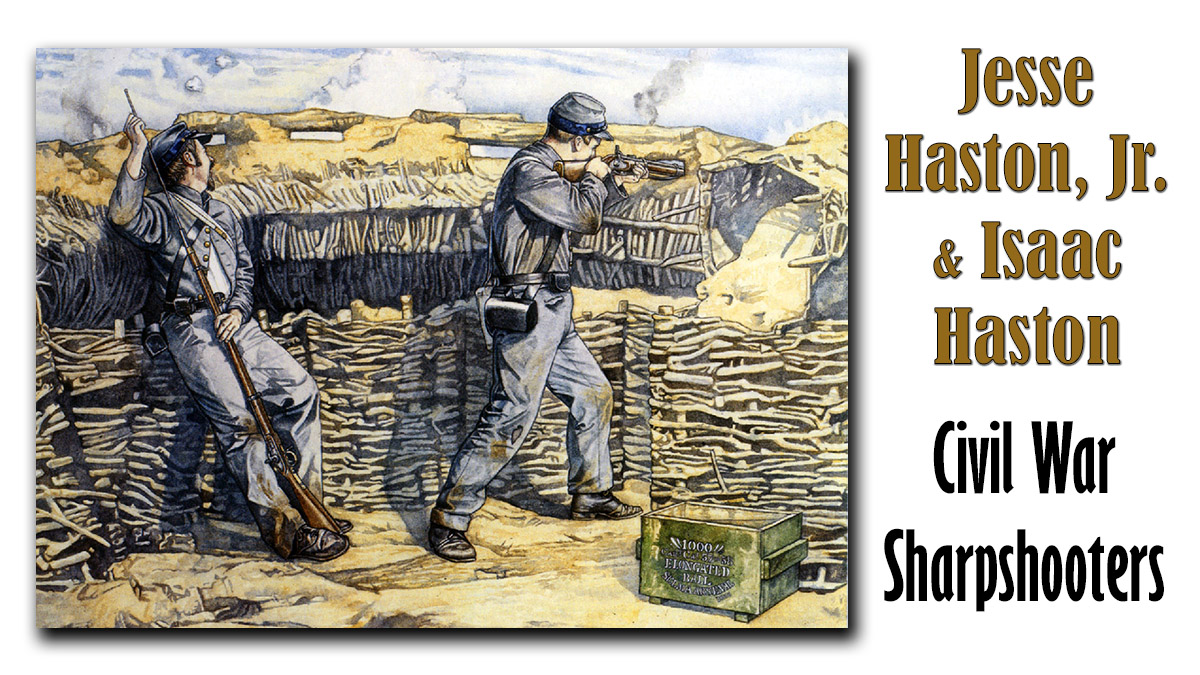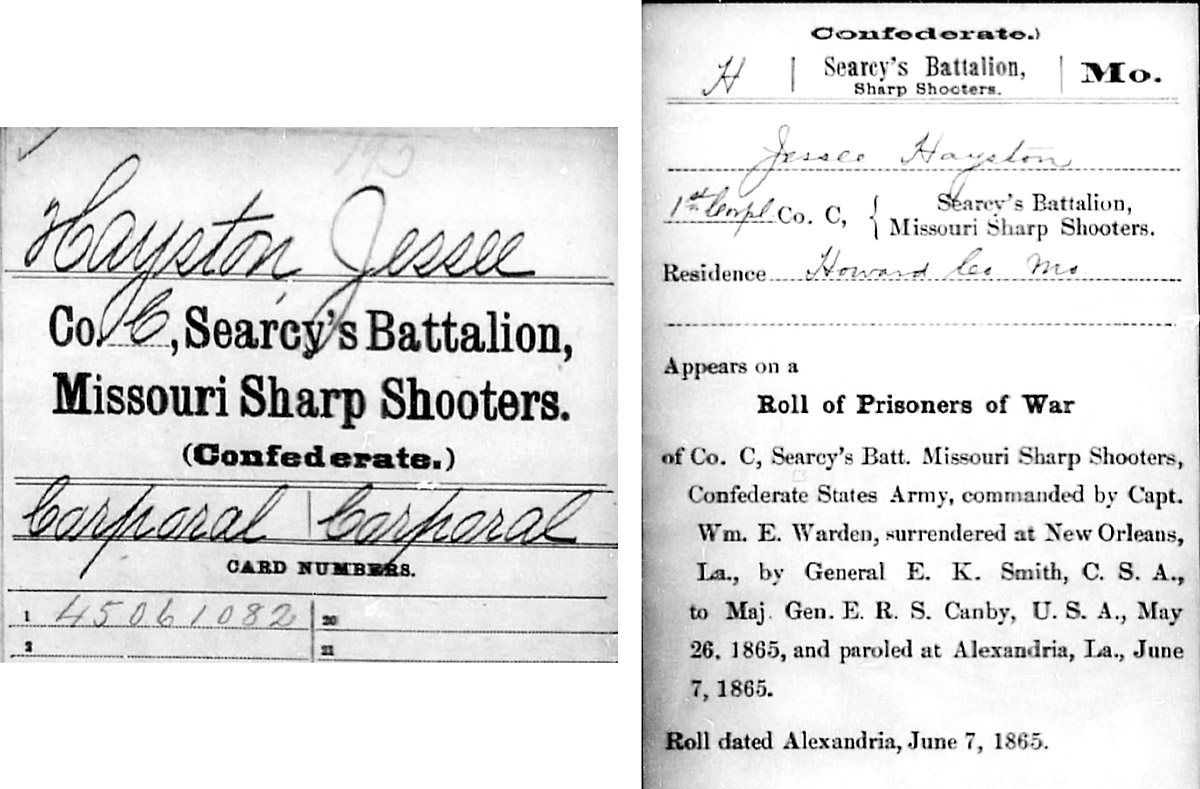Another Widowed Haston Woman - to Yell County, AR
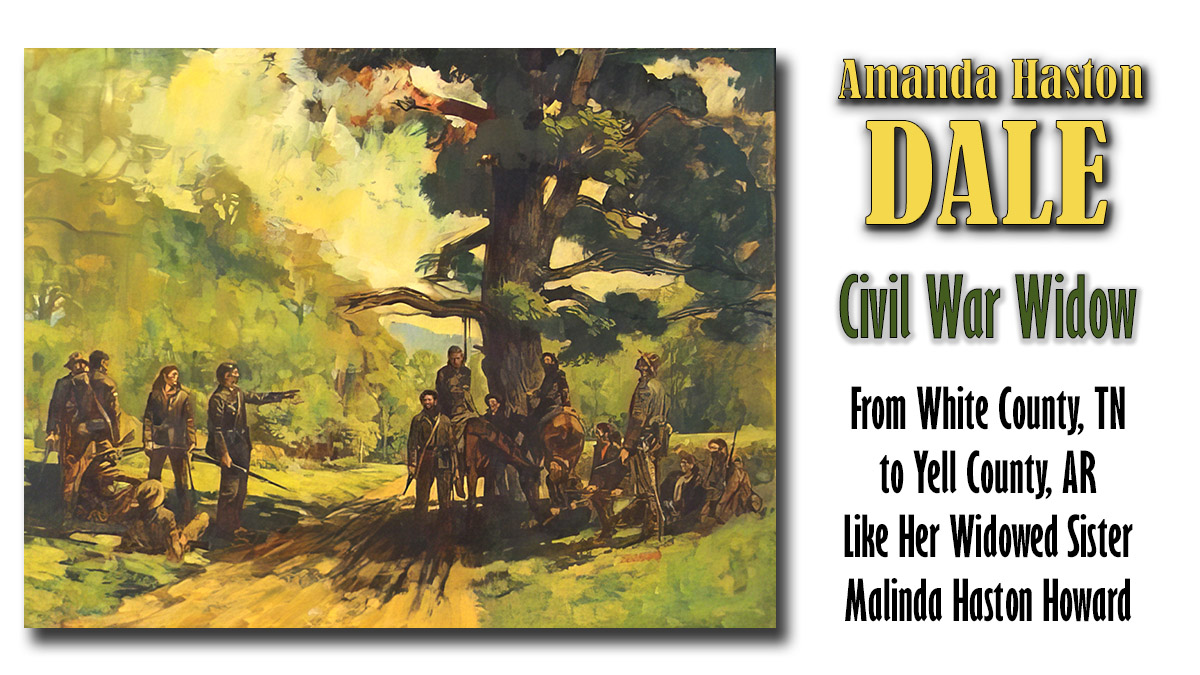
Links will be activated when the posts are written and published.
Be Aware: Some incorrect information in the Dale Family Book – Amanda was not a granddaughter of David and Peggy Haston. She was a daughter of Joseph and Sarah Creely Haston.
Amanda Creely Haston was the daughter of Joseph and Sarah Creely Haston and the granddaughter of Daniel Haston. She was born in about 1831, probably just a few months after her father died. In 1850, she lived with her mother in the 3rd district of Van Buren County, TN.
She married William Leonard Dale on March 13, 1858, in White County, TN. William Leonard Dale (Sr.) was the son of John H. and Margaret Dale.
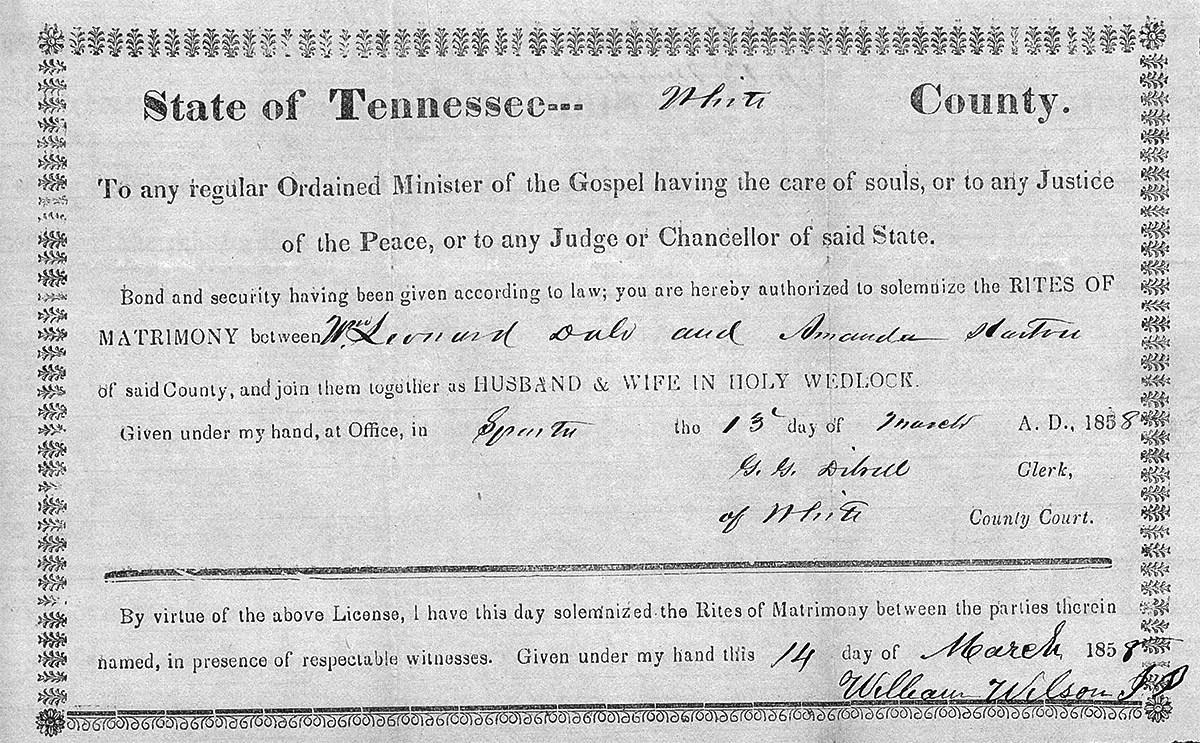
John H. Dale, Amanda’s father-in-law, ran a grist mill on Cane Creek near Amanda’s and other Hastons’ homes. He also ran a public ferry on the Caney Fork River, where Cane Creek emptied into the river. No doubt all of the Hastons in that area, Amanda’s widowed mother (Sarah), and David Haston family members, were regular customers on the ferry and probably at the grist mill. John H. Dale was killed by lightning on August 2, 1847. His wife, William Leonard Dale’s mother, died in 1852.
Three of their children, younger siblings of William Leonard Dale, were “bound out” to be raised and apprenticed after the death of their mother in 1852–Thomas Rufus Dale, age 11; Dicey Dale, age 9; Wesley Martin Dale, age 6.
On January 4, 1862, at Sparta, TN, William L. Dale enlisted for 12 months in the 1st Tennessee Infantry Battalion of the Confederate Army, led by Major Stephen H. Colms. He was a private in Captain William M. Simpson’s Company E, along with other men from White County, TN. He joined along with his nephew, William Henderson Haston (grandson of Joseph Haston through Isaac and Emily King Haston).
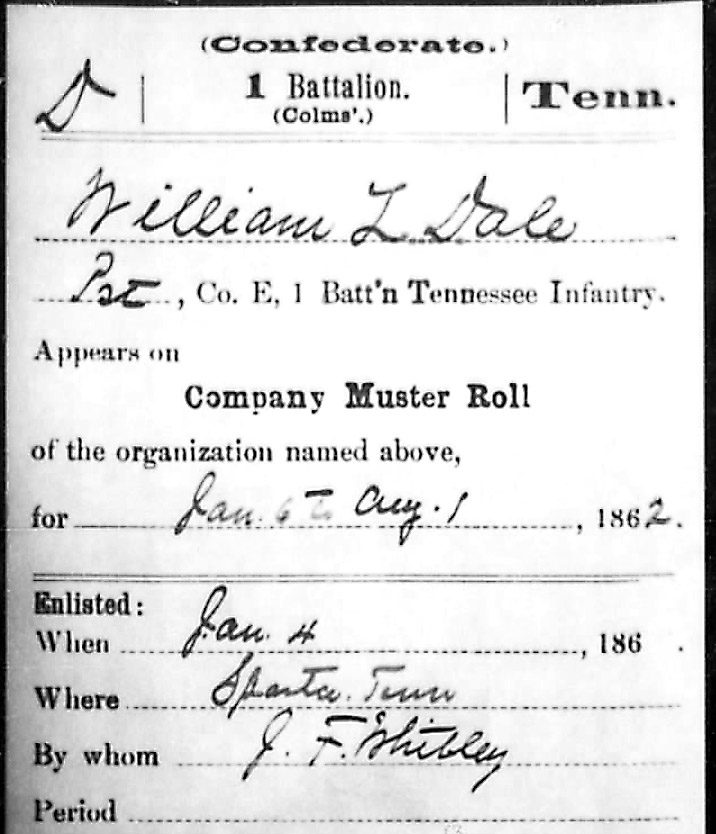
William L. Dale's Civil War Experiences
William L. Dale’s participation in the Civil War got off to a bad start, five weeks after he enlisted the Confederates surrendered Fort Donelson, near Nashville, TN, and his company was captured. The loss resulted in most of Kentucky and much of Tennessee falling under Union control. The battalion was exchanged at Vicksburg September 10, 1862 and reorganized at the Camp for Exchanged Prisoners at Jackson, Mississippi, on September 20, 1862.
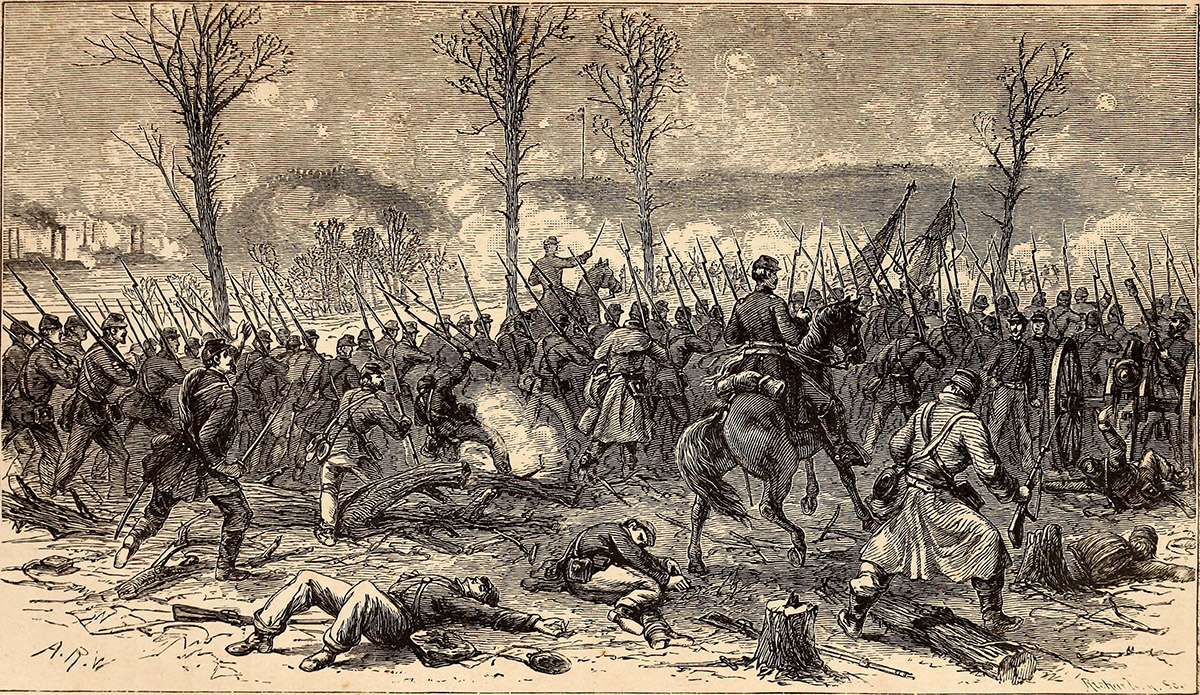
William Dale’s unit fought in the Battle of Chickasaw Bayou (Mississippi), December 26–29, 1862. The Confederates gained a victory in this opening engagement of the Vicksburg Campaign, an encouraging stop in the Union’s attempt to gain control of the Mississippi River.
On May 12, 1863, Amanda Haston Dales’ husband, was engaged at the Battle of Raymond (Mississippi), another attempt to repulse the Union’s advance of Vicksburg, Mississippi. The Confederates disengaged and fell back in the face of superior Union numbers.
Port Hudson is located about 20 miles northwest of Baton Rouge, LA. The May 22–July 9, 1863 battle-siege at Port Hudson was the final engagement in the Union campaign to recapture the Mississippi River in the Civil War. While Union General Grant was besieging Vicksburg upriver, Union General Banks was ordered to capture Port Hudson, a Confederate stronghold downriver. When the Union assault on Port Hudson failed, his massive army settled into a 48-day siege, the longest in US military history to that point. When Vicksburg fell, the Confederates surrendered at Port Hudson.

Poor supply lines, starvation, and disease were to remain the constant problems of the Port Hudson position, and overwhelm efforts to improve conditions for the soldiers of the garrison. Louisiana Private Robert D. Patrick wrote: “…never since I have been in the army have I fared so badly and in truth I have been almost starved.” -Wikipedia
“By July, the siege grew desperate for the Confederates for lack of food, and many soldiers resorted to eating mules and rats.”
750 Rebel soldiers were killed or wounded; 250 died of disease, and 6,340 surrendered. Many of those who surrendered signed the US oath of allegiance and joined the Union Army rather than be incarcerated in a prison camp. William Leonard Dale was one of those who joined the Union Army.
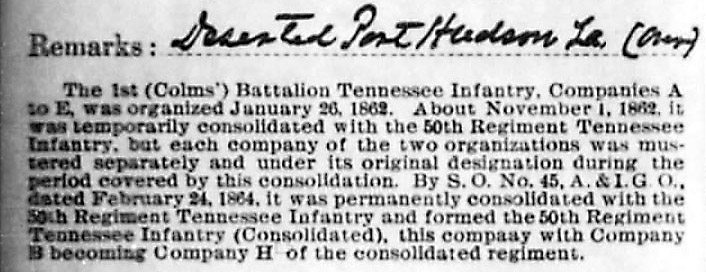
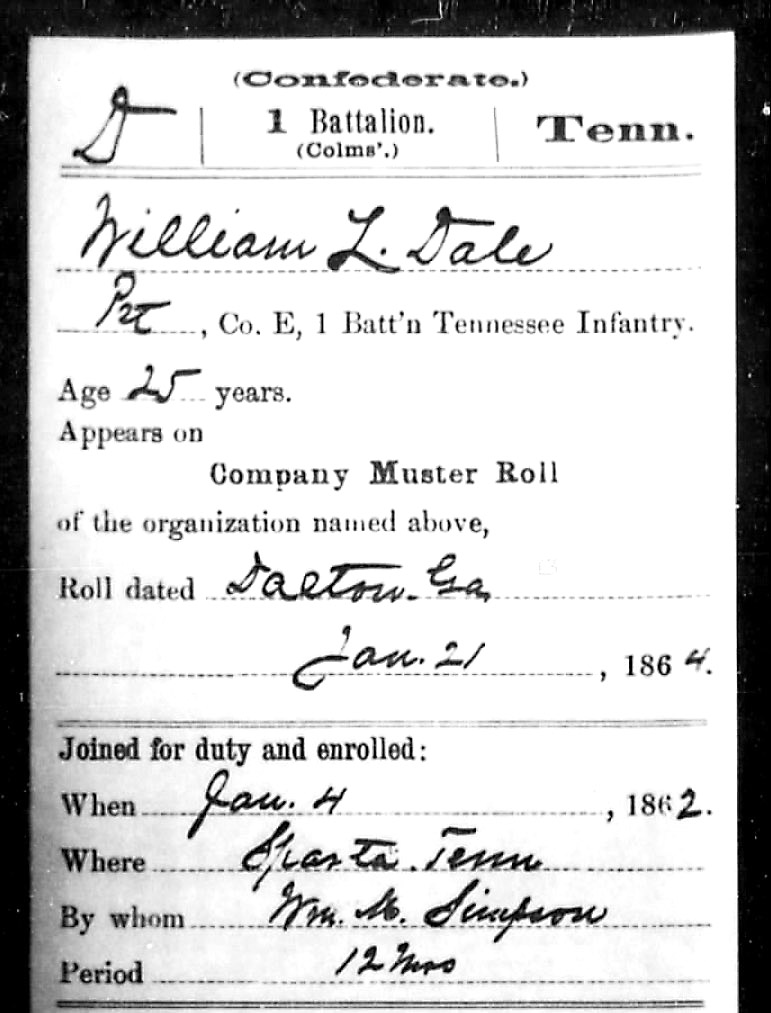
February 1864 - On Furlough Back Home in White County, TN


Amanda Haston Dale
Another Haston Widow Leads Her Family to Yell County, Arkansas
At the time of the 1870 census, Amanda (“Dail”) and her three children were living in District 2 (Hickory Valley) of White County, TN–John H. (11), Sarah M. (9), and William L. (6).
Amanda Haston Dale (born 1831) was a younger sister of Malinda Haston Howard (born in 1819 or earlier). They were both widows – single moms – left to raise their children.
According to the family report of Howard H. Hasting (below) I have always thought that Malinda Haston Howard and Amanda traveled together with their families to Yell County, Arkansas together. However, Amanda’s family appears in the 1870 White County, TN census and Malinda’s family does not.
However, Malinda supposedly lived in Madison County, TN a short while in the 1870s before moving on to Yell County, Arkansas. Maybe Amanda caught up with her older sister Malinda in Madison County, TN, and perhaps they journeyed together from there to Yell County.
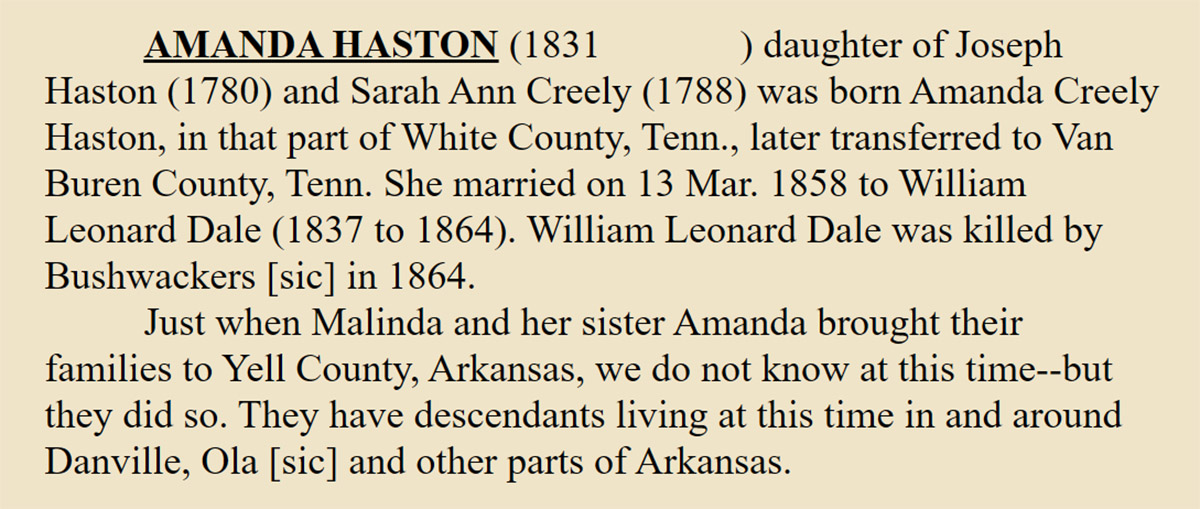
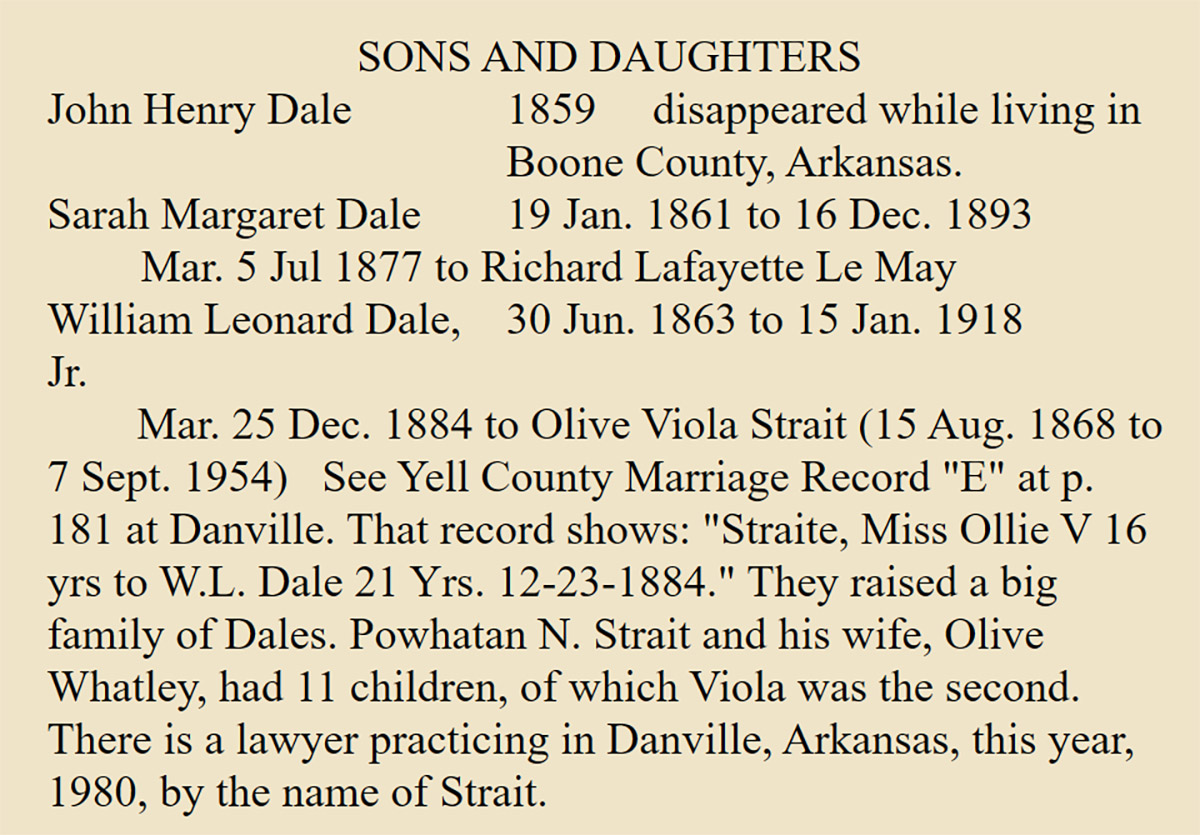
William L. and Amanda’s oldest son, John Henry Dale, who “disappeared while living in Boone County, Arkansas,” moved to Cook County, IL, where he worked as a railroad fireman. He died there on March 3, 1928 and is buried in the Ebenezer Lutheran Cemetery in Oak Forest, IL.
Family records indicate that Amanda Dale died in 1876, a few years after settling in Yell County, Arkansas. I have not discovered where she died and was buried.
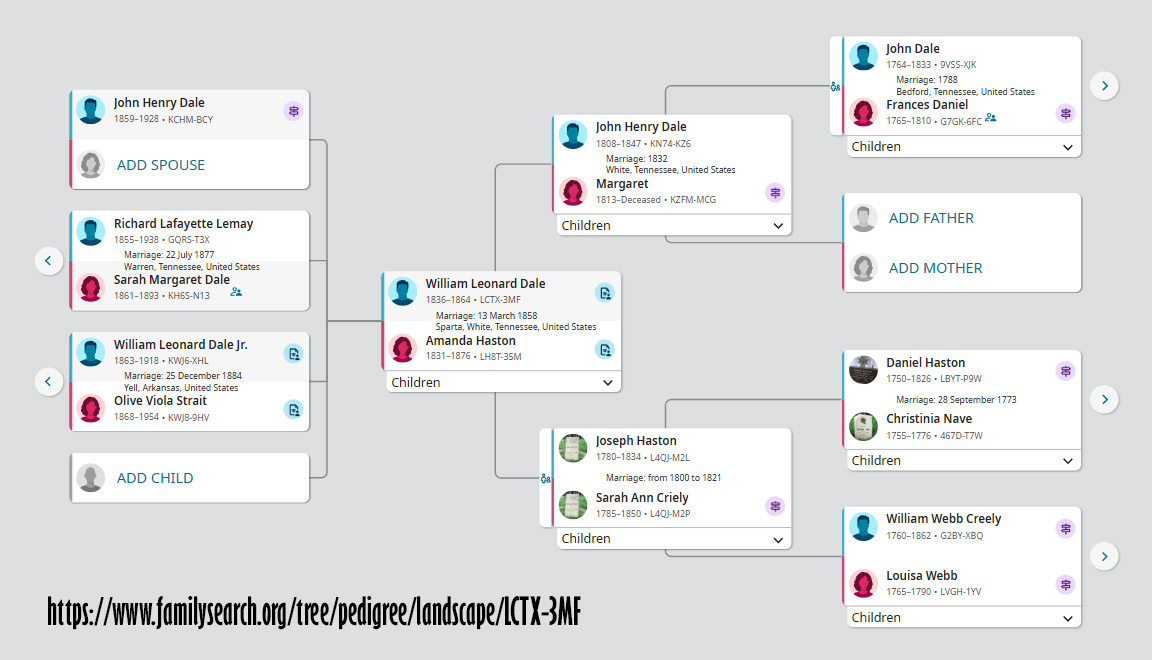
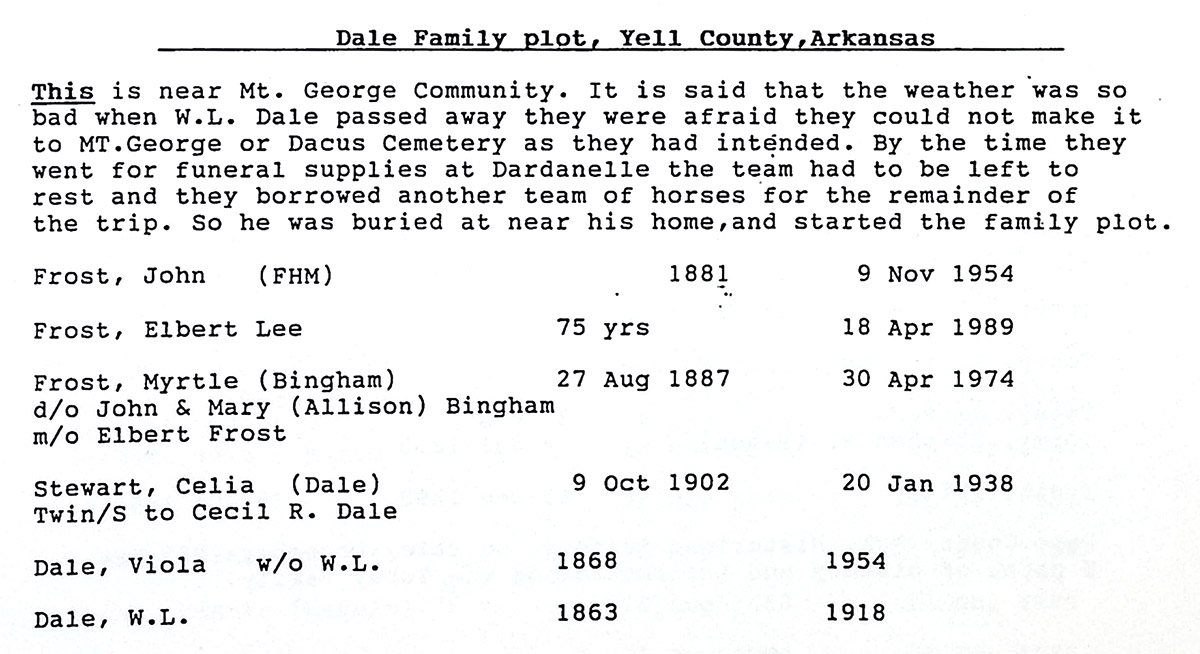
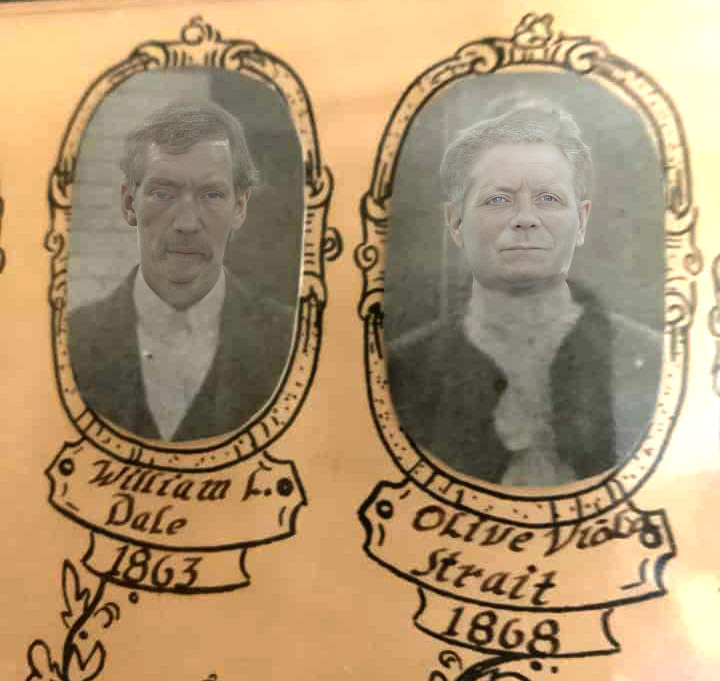

If you appreciated this article, please share it with others who might also enjoy it.















